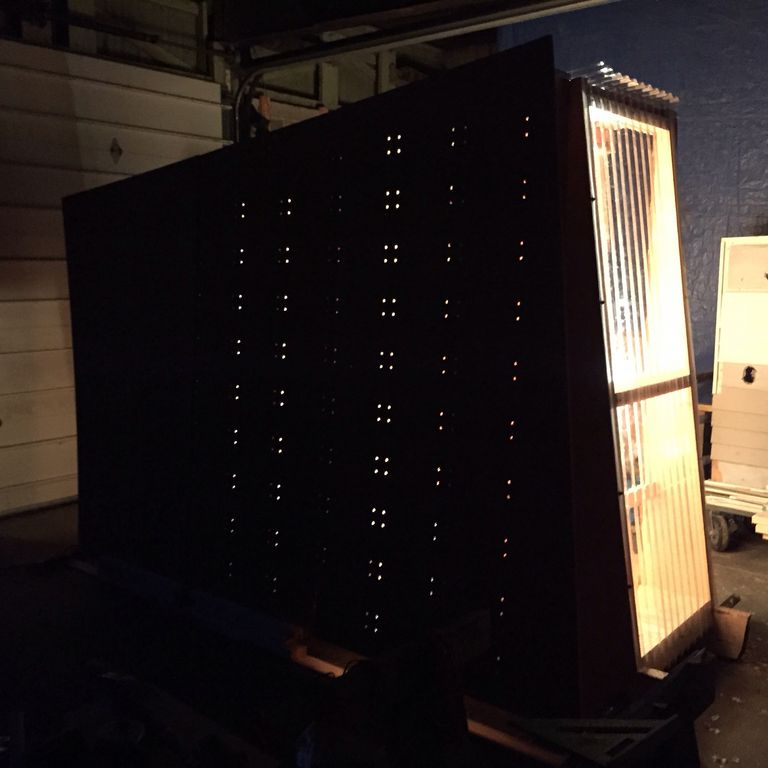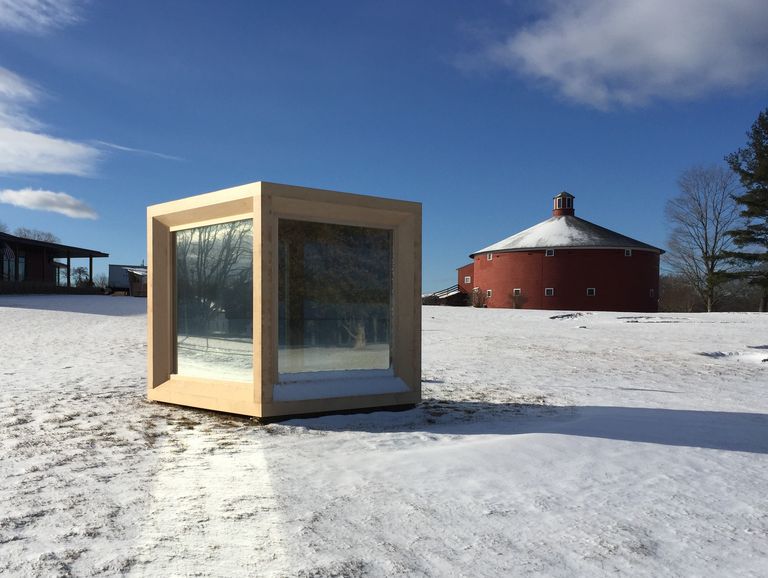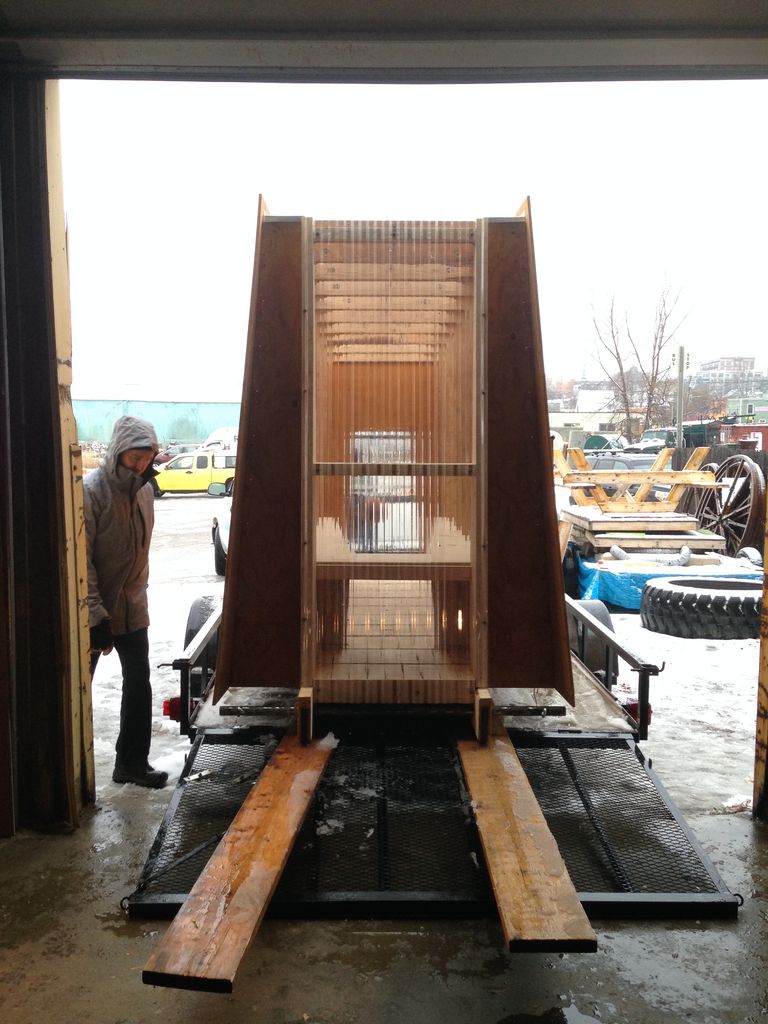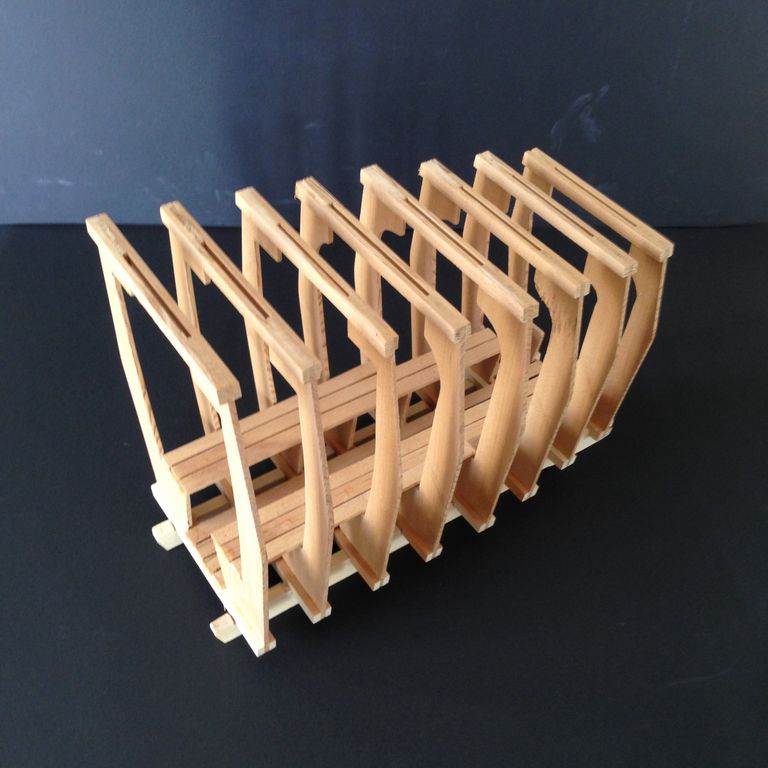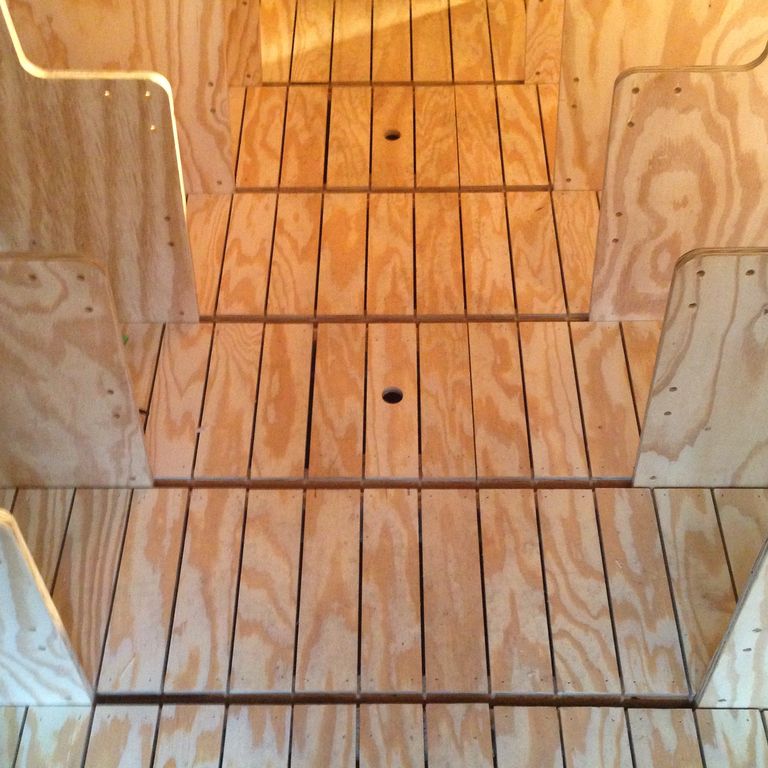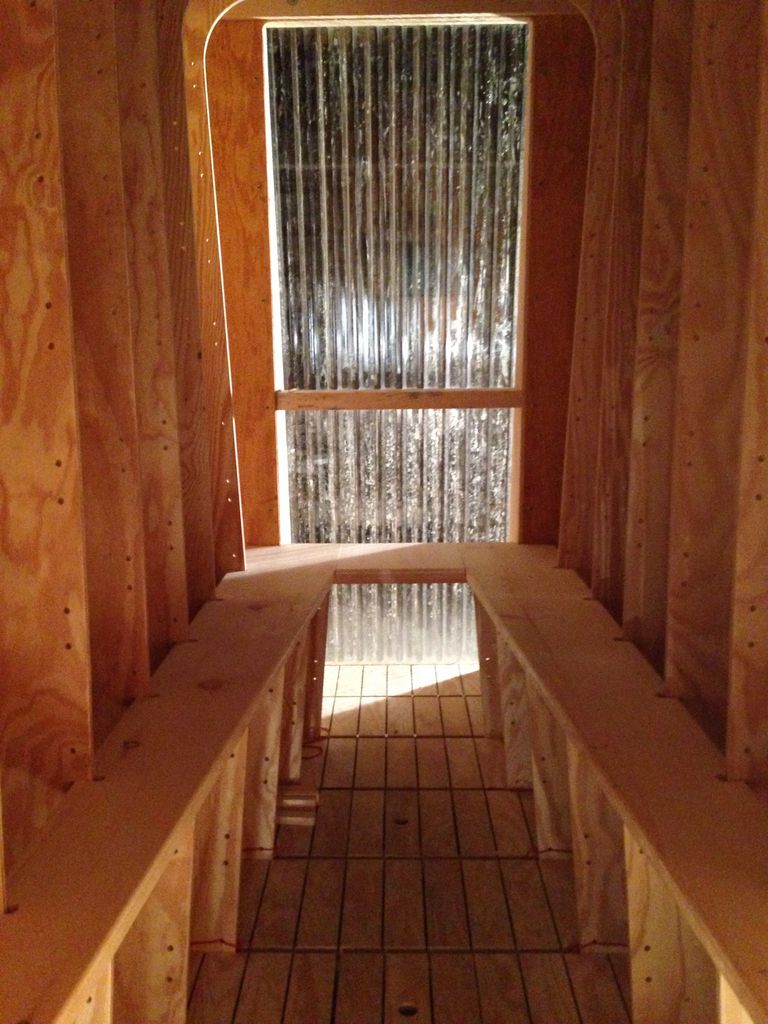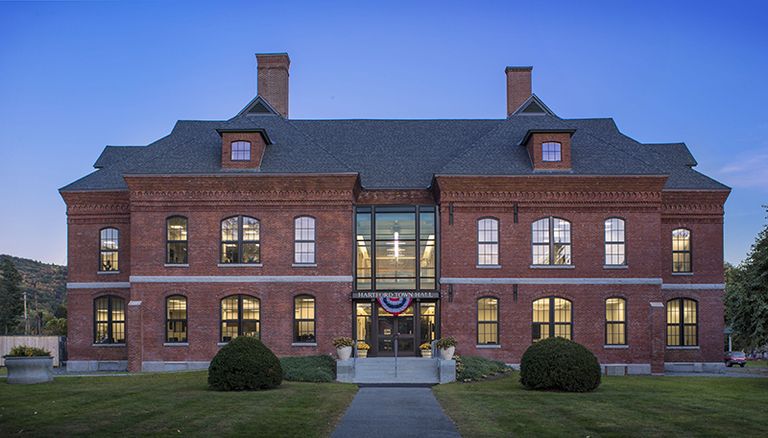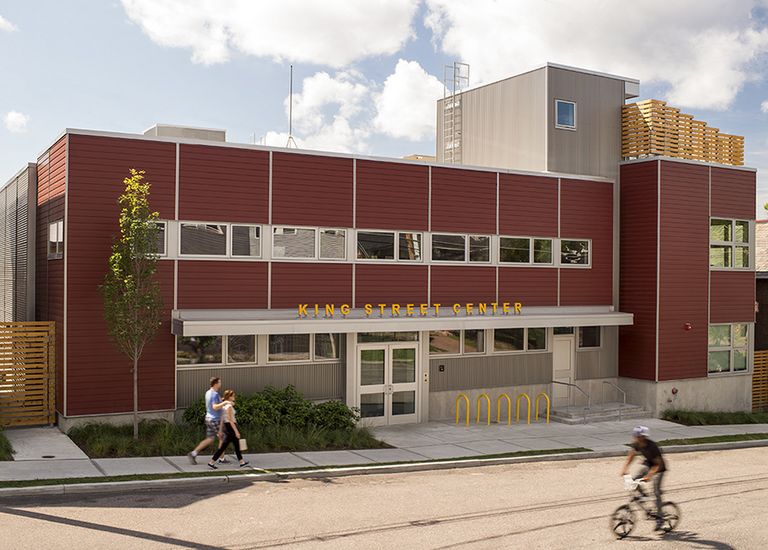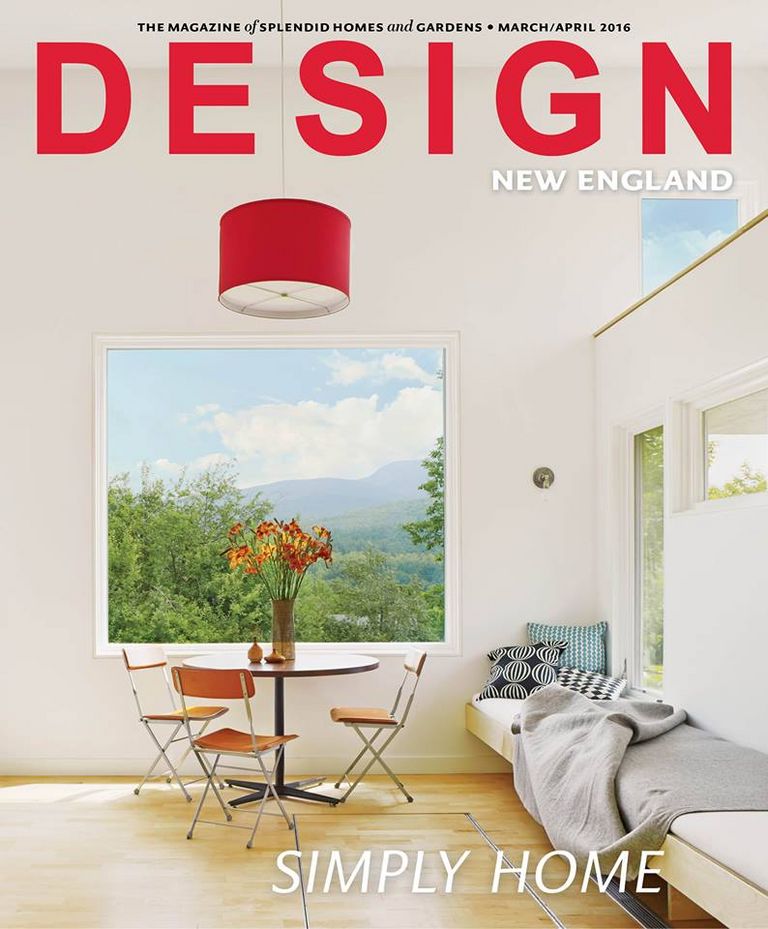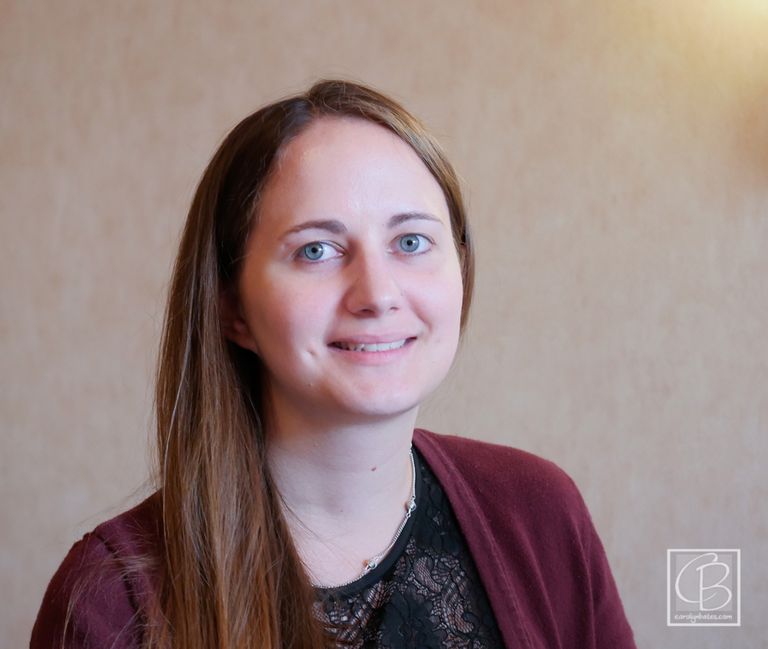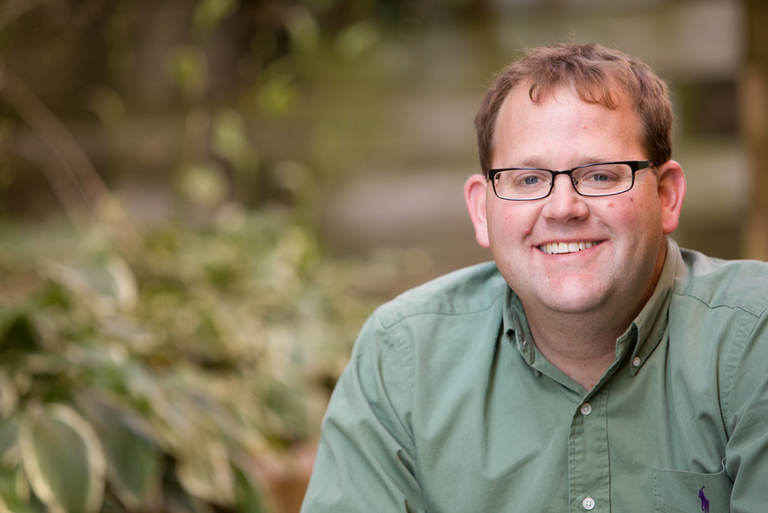5.16 AIAVT News
Architectural Teams Build Ice Shanties for Shelburne Museum Installation
This past February, TruexCullins Architecture in Burlington and the Shelburne firms Pill-Maharam Architects, S2 Architecture and Selin + Selin Architecture used their boundless creativity to build ice “shanties” as part of an “Arctictecture” installation on the grounds of the Shelburne Musuem. More...
AIAVT Hosts Presentation of AIA+2030 Online Series Course About Target + Load Reduction
On Thursday, April 21 AIA Vermont presented the second course in the AIA + 2030 online series, “The Power of Target + Load Reduction.” More...
What You Said: AIAVT Members’ Responses to Communications Survey Questions
Thanks to those of you who responded to our recent survey! More...
Got Licensing Questions? Ask Vermont’s New Architect Licensing Advisors
This spring, Doug Viehmann, AIA, of GVV Architects, Inc., Vermont’s AIA state component Architect Licensing Advisor since 1998, turned the reins over to two more recent architecture licensees. More...
Outcome of AIAVT Public Policy Survey: Building Codes Most Important
According to our chapter’s registered architects, building codes are the most important issue on which our government affairs group should focus. More...
Architectural Teams Build Ice Shanties for Shelburne Museum Installation
This past February, TruexCullins Architecture in Burlington and the Shelburne firms Pill-Maharam Architects, S2 Architecture and Selin + Selin Architecture used their boundless creativity to build ice “shanties” as part of an “Arctictecture” installation on the grounds of the Shelburne Musuem. Specifically, the shanties were located in front of the Pizzagalli Center for Art and Education and augmented the larger exhibit “32 Degrees—the Art of Winter.”
The TruexCullins project, titled the “Ice Ark,” (four photos at right) was designed and built by Rolf Kielman, AIA; Keith Nelson, Andrew Chardain, Assoc. AIA; and Josh Chafe, Assoc. AIA, with substantial help from many others. The team wanted to use the project as a means to experiment in ways that are not always possible in their “day job” projects, with the hopes of learning new things that might influence their thinking going forward.
Kielman said, “With the help of Doug Walker, we approached this as a project that would be fabricated in large part with a computer driven CNC router utilizing our computer files as the driver. The vertical bents and the exterior plywood skin were fabricated in this manner. The base and horizontal ribs were fabricated traditionally, but the plywood was fastened to the bents using red paracord. This created small light holes on the exterior skin.”
The museum gave each design team a stipend of $1,000 for materials. Though this presented a challenge, Kielman said the TruexCullins team succeeded in staying within budget not counting the pizza and beer consumed during the process!
Seven Days author Amy Lilly wrote a story about all of the teams’ endeavors; read Architects Go Arctic: Ice Shanties at Shelburne Museum.
AIAVT Hosts Presentation of AIA+2030 Online Series Course About Target + Load Reduction
By Joel Page, AIA
On Thursday, April 21 AIA Vermont presented the second course in the AIA+2030 Online Series, “The Power of Target + Load Reduction.” The learning opportunity and social was held simultaneously at Contois Auditorium in Burlington and at the Chaplin Hall Gallery at Norwich University in Northfield.
By holding the presentation in two locations, AIAVT aimed to reach out to a larger segment of the built-environment community. The events were made possible, in great part, due to Efficiency Vermont (underwriter), Loewen Windows and Doors of Vermont & New Hampshire (silver sponsor), and hosts CEDO, Burlington Electric Department, and Norwich University.
While Course 2 focused on the importance of developing a matrix of information as a tool to measure and evaluate building performance, the group discussion afterward, which many found even more useful than the presentation itself, revealed that the tools are only useful if the information is relevant to the specific project.
According to Eric Morrow, AIA, Dore & Whittier Architects, facilitator of the discussion in Burlington, “It was clear that folks are coming at this with a wide array of experience and that there was not one monolithic understanding of the issues. The most vexing question in the discussion was, ‘Can we start energy modeling before the design team puts pencil to paper?’ While some thought that doing so would not be practical, others spoke to the value and opportunity that doing so could offer.”
Among other points and questions that came up during the discussions were:
- Energy modeling of building is a useful predictor of building performance, but has limitations that need to be understood by the design team and building owner. Where one gets information from, how one uses that information, and what one uses that information for all affect the accuracy and significance of a model. Will the modeling ultimately reflect actual building use and operating costs?
- Modeling can be expensive. Are there modeling options or methods that are less costly, yet provide useful information for viable cost-effective designs?
- Is the 2003 design baseline used in the online presentation the best starting point for meeting the 2030 goals?
- The best approach to an integrated design is to get as many project team members involved as early as possible in the design discussion.
The AIA+2030 Online Series is designed to provide a vision, tools, and resources to the architectural community for a reduction in carbon fuel use. Specifically, the goal is to achieve carbon neutral design as a standard by 2030. Considering we are just 14 years from 2030 this goal might seem overwhelming. By presenting this series, AIAVT hopes to start a discussion that will develop quality incremental steps to achieve more energy efficient buildings and a reduced dependence on fossil fuels. AIAVT’s leadership believes that architects are problem solvers and creative visionaries that can make a difference.
If you have missed the first two showings, you can watch them online at your office or desk and get caught up: http://www.aiaplus2030.org/online/online. A group showing of Course 3 of the Online Series is scheduled for June 30 at the same two venues in Burlington and Northfield. The course title is “Accentuate the Positive: Climate Responsive Design.”
To continue the productive discussion related to these and the future course presentations, AIAVT has set up a Google discussion group. Yu may be able to access the group here. If not, contact Carol Miklos for an invitation.
What You Said: AIAVT Members’ Responses to Communications Survey Questions
By Carol Miklos
Thanks to those of you who responded to our recent survey! As you may recall, the second part of the survey addressed communications from AIAVT. Eighty-two (82) of you answered the survey to help us determine members’ overall communications preferences and specific views regarding AIAVT News. Of the total, 76 were licensed and five were associates. This represents nearly 40% of our membership.
A summary of what you had to say and how we plan to respond is below—but remember participation in the survey represents only the beginning steps towards making the newsletter all members want it to be. Help us create the best possible product by participating in its creation—submit material, reply to inquiries for achievements, and notify us of upcoming events.
A healthy majority (70%) of respondents wanted AIAVT to continue publishing a newsletter; of that group 66% said they liked the online format, as is, where they receive an email with a link to the newsletter on the Chapter website. Twenty-one (21%) percent said they would prefer getting AIAVT news directly within an email as opposed to via a link. A few said they would prefer a blog and just one would prefer getting news via Facebook.
- Given these responses, we will continue publishing AIAVT News in its current format. Since 20% of you said you might like a format within an email, we may consider incorporating the quarterly news or other news blurbs into a Mail Chimp format. However, such methods may offer less visually appealing results and present archiving challenges.
As far as reading AIAVT News, a third of respondents said they read the publication “frequently,” half said they read the publication “sometimes,” and the remainder said they rarely read it.
Sixteen (16) members provided information in the optional “comments” section of the survey. Eleven (11) people said they liked to see public policy-related topics covered; six members liked information about programs that offer learning units; and six wanted to see more news about members (e.g., profiles) and “awards given,” “new employees,” and “current projects.” A few people said they would like to see a column written by a local architect.
In response to your comments about content:
- We’ll continue to provide news of the Public Policy Committee’s activities (See the results of the Public Policy Survey in this issue to find out where efforts will be focused for 2016.)
- We’ll continue to provide announcements about upcoming programs that offer LUs; please remember to check the calendar on the AIAVT web site, as we can’t include mention of every event in the newsletter itself.
- We will continue to solicit information for our “Achievements” column, which is where notices of awards, promotions, and other such items are published. Is there an office administrator or marketing/public relations coordinator at your firm that we can contact to obtain this type of information? If so, forward his/her contact information!
- We invite someone to step forward and write a quarterly column—or write a blog!
- Phone calls to members—for the express purpose of gathering information about what they’re working on—will be made so that this information can be shared in a newsletter story.
Other Important Comments—Not Related to the Newsletter
EMAIL VOLUME
Several people stated that they felt that they were receiving too many emails from AIAVT. On the other hand (prior to the communications survey), members have said that they appreciated getting more information via email in recent years than they had a decade ago. So, clearly, there is a balance needed and one member’s definition of “too much” may be different from another’s.
The email comments prompted discussion at the March board of directors meeting, where we were able to determine that many of the emails from AIA National regarding convention, AIAU, etc., are duplicates of messages that you are already receiving. Thus, we will discontinue this practice and your incoming mail from AIAVT will be reduced.
MINUTES/ELECTION OF OFFICERS/COMMITTEES
A few survey respondents had the perception that AIAVT was not publishing information regarding board of directors’ meetings. In fact, meeting dates are published on the AIAVT calendar; please take a look http://www.aiavt.org/events/. The minutes of meetings are also published: http://www.aiavt.org/about/board/brdrecords/. In keeping with our bylaws, the minutes of a meeting are approved at a subsequent meeting (typically, the very next meeting) and then published promptly thereafter.
A few members wanted to know more about committees and how to join. The fact is, AIAVT welcomes architect, associate or affiliate members to join a committee; please contact Carol Miklos at info@ aiavt.org to express interest.
Currently, the following Committees exist:
- ACX Conference Committee—Brian Leet, Chair; John Kjos, Lisa Rovner, Cam Featherstonhaugh, Jamie Wagner, Jamie Gravel, Lawrence Deane, and others
- Communications Committee—Joel Page, Evon Calabrese, Steve Kredell, Dan Goltzman, Diantha Korzun; Web Advisor, Steve Clark
- Honors + Design Awards Committee—Diantha Korzun, Chair; Ward Joyce; Gary Corey
- Energy + the Environment/2030 Challenge Committee—Eric Morrow, Chair; Lawrence Deane, Megan Nedzinski
- Golf Committee—The group is taking a break in 2016; any member with an idea for raising funds for scholarships this year is urged to come forward.
- Nominating Committee 2016—Kevin Racek, Lisa Rovner
- Public Policy Committee—Dan Goltzman, Chair; Jesse Beck, Bob Duncan, Megan Nedzinski, Charlie Willner
- Scholarship Committee— Ward Joyce, Danny Sagan
Committees are listed on the website at: http://www.aiavt.org/about/
A few respondents wanted a better understanding of how officers are nominated and elected. As per our Chapter’s by-laws, the Annual Meeting in December is held for the purposes of nominating and electing officers and directors. Also, per the bylaws, nominations may be made from the floor or a slate of candidates may be prepared in advance by a nominating committee. AIAVT has used the latter method. The nominations have reflected suggestions from current directors and the executive director; the duties of the role have been explained to each nominee prior to the meeting.
The Nominating Committee has strived for the board of directors to be composed of members from different firms. Occasionally, a member has been elected to serve while employed by one firm and has gone on to work for another while still serving his/her term, resulting in more than one director/officer from a firm. In other instances, an Associate and Architect from the same firm may be nominated and elected with the expectation that each would make distinct contributions to the board.
- We are now exploring the electronic processes of other Chapters regarding a “Call for Nominations” for the Board of Directors and plan to institute this in 2016. In accordance with our bylaws, voting for directors will continue, in person, at the Annual Meeting.
- We urge you to nominate yourself or a colleague for a position on the board. Look for the “Call for Nominations” that will be sent out this year. AIAVT is only as effective as its member involvement.
FIRM news
As part of Efficiency Vermont’s “2016 Best of the Best Award” program, Bread Loaf Corporation of Middlebury received a Building Performance, Major Renovation Honor Award – Large Building for the Hartford Town Hall in White River Junction. The design of the newly renovated Hartford Town Hall focuses on the architectural fundamentals of durability and energy efficiency. A solar array, rather than typical fossil fuels, provides building power for heating and cooling loads as this municipal building aims to become a net-zero energy structure.
The new facility is a gut renovation providing light-filled and thermally comfortable spaces for town departments with a number of public meeting spaces. This is the first significant renovation that the 1890s-era building, originally designed as a school, has had since the 1960s.
Duncan Wisniewski Architecture has started construction on “Elm Place,” the first multi-family Passive House certified project in Vermont. “Unfortunately,” says Michael Wisniewski, AIA, “some dudes in Brewer, Maine beat us to the punch for the first of such a project in New England!”
The project, located in Burlington’s old North End, will consist of 30 affordable senior housing units plus a common area. “It wasn’t hard to convince our client, Cathedral Square, to go the Passive House route,” says Wisniewski. “We went through cost-estimating and energy modeling processes that demonstrated the benefits far outweighed the minimal increased costs. We were surprised ourselves: when you get into the multi-family category R-values don’t have to be too high. With carefully selected windows, insulation and air-tight construction, we were able to eliminate the baseboard heating we typically would have had to include. “
The Guilford Sound Artists’ Residence, a 2015 AIAVT Honor Award winner, received International Passive House certification. Built by Ryall Porter Sheridan Architects, New York, NY, it is one of three certified Passive House projects in Vermont and the only certified institutional project. For more info: http://www.passivhausprojekte.de/index.php?lang=en#d_4745.
Additionally, the Northeast Sustainable Energy Association added the Guilford Sound project to their online database showcasing exemplary projects featuring sustainable energy practices: http://nesea.org/project-case-study/guilford-sound-artists-residence/general
King Street Center, designed by TruexCullins Architecture and Interior Design, recently received the Burlington Business Association’s Hertzel Pasackow Architectural Excellence Award for the renovation and expansion of their Burlington facility. The award is given annually to recognize a building that significantly contributes to the physical or architectural quality of Burlington; it is named in honor of Hertzel Pasackow, a founding member of the BBA and the Church Street Marketplace Commission.
Rolf Kielman, AIA, leader of the design team, said about the project, "Most architects take great satisfaction in the creation of a public work, especially if that work is central to the life of a viable community. For us, the King Street Center was just such a project, functioning at the heart of a diverse and historic Burlington neighborhood. This was also a center started some 25 years ago by former partner, Roland Batten. For us to be able to forward his efforts was a tribute to the role he played as a Burlington architect."
The King Street Center serves more than 500 children and families with pre-school and after-school programs, tutoring, mentoring, technology education, athletics, and art instruction. This major renovation and expansion project doubled the center’s size to 23,000 square feet and added critical program space to support the organization’s mission.
The building is located in a developed, urban block consisting of variously scaled residential structures. The renovated façade eases the center’s increased program into a delicate street setting. The building exterior expresses a contemporary architectural language while echoing the long history of this historic neighborhood. Major program elements include two floors of classroom space, a renovated gymnasium, a pedestrian-friendly entrance, a rooftop playground, and a 15 kW photovoltaic solar array.
In addition to Kielman, the TruexCullins design team for the project included project manager Peter Burns, designer Andrew Chardain, Assoc. AIA; and interior designer Kristen Trottier.
Outcome of AIAVT Public Policy Survey: Building Codes Most Important
By Dan Goltzman, AIA
According to our chapter’s registered architects, building codes are the most important issue on which our government affairs group should focus.
At the beginning of 2016, the AIAVT Public Policy Committee decided to survey the membership to determine what issue(s) should be its next focus. The resulting responses pointed to building codes as the item most worthy of the committee’s attention. Members pointed to the lack of a uniform code, emerging energy code standards, and general code enforcement as issues they would like to see addressed at the state level.
Legislation that had been under consideration at the time of survey development (but has since been dropped for this year) relating to a proposed professional services tax and a state-wide carbon tax were other topics many respondents ranked as important. Phosphorus levels in Lake Champlain and issues around solar power rounded out the top tier items.
The vast majority of survey respondents were licensed architects who had been practicing for ten years or more and worked for larger firms. Nearly forty percent of the AIAVT membership responded.
After a year-long effort in 2015 to attempt to pass a Statute of Repose through the legislature that was unsuccessful due, in part, to the lack of member engagement, AIAVT’s Public Policy Committee had decided to query the membership as to what issue(s) would engage the local architectural community—thereby providing the best chance of a successful outcome.
To gauge opinion, the committee created a brief survey that was distributed electronically to all AIAVT members. Topic categories included Codes & Regulations, Energy & the Environment, and the Architecture & the Construction Industry.
Some of the most interesting findings are as follows:
- A number of respondents stated that AIAVT should focus directly on issues affecting the profession and not on “environmental issues architects are not necessarily experts on.” This sentiment correlated directly with highest interest in topics not in the environmental section.
- Within the Codes and Regulations section, the standardization of codes across the state and improved code adoption methods and timelines were of highest interest.
- Regarding Energy & the Environment, instituting TMDL levels for phosphorus into Vermont lakes and supporting a state carbon tax garnered the most positive replies.
- The specific issues of wind turbines on ridgelines and solar farms on agricultural land provoked the most amount of commentary—and indicated a roughly even split for and against. There was consensus that these items are best dealt with on a case-by-case basis, rather than having AIAVT take an overarching policy position on either one.
- Support of mandatory licensure for contractors and opposition to a proposed professional services tax were the dominant sentiments in the Architecture & Construction Industry section of the survey.
With the vast majority of respondents indicating a high level of interest in and consistent comments around code issues, the next focus of the Public Policy Committee came into shape. Respondents noted that “consolidation and standardization of codes should definitely be a committee focus,” “it’s high time Vermont began enforcing its codes through a statewide inspection program,” “the lack of code enforcement is leading to uneven building quality in the state” and “correlating building/energy codes with enforcement regimes—and the ability of state personnel to understand and apply them—is paramount.”
With the agenda set, the committee has set about strategizing how to approach all relevant stakeholders. The next update will lay out the proposed strategies. It is the committee’s hope that having heard from the members that this issue is important to them, there will be an enthusiastic response and willing volunteers when the time comes to participate.
Calendar
There are currently no posts in this list.
Are you AIAVT’s Louis Kahn? Looking for Art by Architects!
AIAVT News would like to initiate a new column to showcase the fine art of our members. Send your jpeg files of sketches, painting, sculpture, and non-work related photography to Carol Miklos. Also, send us your ideas for a name for this new column!
latest ACHIEVEMENTS
According to Duncan Wisniewski Architects, staff member Taryn Barrett, AIA, has batted seven for seven on her licensing exams and is now a registered architect in Vermont—No. 92828! Barrett has worked at DWA since 2008 after graduating from Miami University with her Master of Architecture. She lives in Colchester with her husband and two children.
Ruth Freeman (d. 1969), AIAVT’s first president, was featured in a story published by Seven Days in honor of Vermont history month: Read: Vermont's First Female Architect, Ruth Freeman.
Design New England featured the newly completed “MicroHOUSE” project by Elizabeth Herrmann, AIA, on the cover of its March/April 2016 issue. Herrmann had received a 2015 AIAVT Design Excellence Award for the house. Story author William Morgan said, “Elizabeth Herrmann brings the tiny house concept to new heights.” Read “Small is Beautiful” to learn more.
Bill Maclay, AIA, Maclay Architects, was an invited presenter at the Northeast Sustainable Energy Association (NESEA) Building Energy Boston Conference + Trade Show held March 8-10 at the Seaport World Trade Center in Boston, where with engineer Bob Somers he co-presented “Is Net Zero Energy Net Zero Benefit?” At the same conference, Maclay and office colleagues Megan Nedzinski, AIA, and Andy Shapiro co-presented a session with architect Kaplan Thompson and builder Peter Warren titled “Integrated Design for High Performance Schools.”
Tolya Syril Stonorov, AIA, Principal, Stonorov Workshop received a Dana Category I grant from Norwich University and recently gave a related lecture to professionals, students, and faculty titled “Architecture and Fabrication.” Use the password “SoAA” to view the lecture here: https://vimeo.com/161916678
Got Licensing Questions? Ask Vermont’s New Architect Licensing Advisors
By Carol Miklos
This spring, Doug Viehmann, Vermont’s AIA state component Architect Licensing Advisor since 1998, turned the reins over to two more recent architecture licensees. Viehmann, AIA, of GVV Architects, Inc., had been just the second such advisor in Vermont since the nationwide roles were created ten years prior. Stepping up to the challenge are Devin Bushey, AIA, MorrisSwitzer Environments for Health and Dave Mentzer, AIA, Dore & Whittier Architects; they will serve as co-advisors.
“We’re here to help anyone who’s trying to get a license for the first time—or to help someone with an unusual situation who’s trying to get a license for the first time in this jurisdiction,” said Mentzer. Such situations might refer to someone who graduated from a school that is no longer in existence or a school outside the U.S., Mentzer clarified.
In the past, Viehmann held in-person gatherings to assist potential licensees. While the new advisors have not ruled out such meetings, Bushey said she did not foresee a strong need since now a considerable amount of information is available online. "I expect that we will be answering a lot of questions through email," she said.
As part of their responsibilities, licensing advisers are required to attend an annual summit for both state licensing advisers and state education coordinators across the country. According to Viehmann, the summit is the venue where IDP rules and systems have developed and evolved over the years. Up to 2003, the summits were held in Washington, DC at AIA headquarters. Since 2004, the conference has moved around the country and at that time began including the education coordinators.
Viehmann said, “One reason the meeting location began moving was to increase involvement from regions that were not previously being represented. Many internship issues are the same from state to state, but since each state makes its own licensure laws there are many unique issues, too. As a group, the advisors and coordinators can discuss these issues and help state boards understand internship conflicts. I enjoyed the full-day discussions when I attended and I also liked the great evenings we spent in local architects offices—and in bars— getting to know each other.”
This year Bushey will attend the summit in Chicago and next year Mentzer will be the one to represent Vermont. The focus of the 2016 summit will be to update advisers about changes to the IDP, which is being renamed AXP (Architectural Experience Program) as of June 29. Bushey said she thought completing AXP will be a bit easier than the past program. “Fewer hours will be required,” she said, “and it seems that earning hours will be more intuitive in terms of the categories. The categories for AXP will be very similar to those of the exams—instead of there being two different sets of categories as it has been up to now," she said.
AIAVT News is published by AIA Vermont, a Chapter of the American Institute of Architects.
Opinions are not necessarily the views of AIAVT or any other organization.
AIAVT reserves the right to edit articles for available space and determine appropriate content prior to inclusion. For consideration, submissions must be received 60 days prior to publication month.
For advertising rate and specifications, see our Media Kit.
Please send articles, notices, letters, and graphic submissions to the editor:
Carol Miklos, Executive Director, AIA Vermont
88 Blackbird Lane
Charlotte, Vermont 05445
802-425-6162

